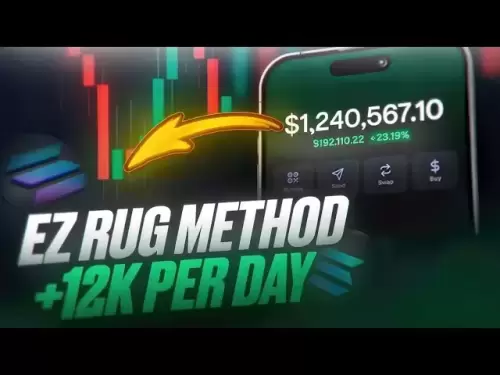-
 Bitcoin
Bitcoin $108,959.9236
0.65% -
 Ethereum
Ethereum $2,617.3023
2.88% -
 Tether USDt
Tether USDt $1.0003
0.01% -
 XRP
XRP $2.3087
1.50% -
 BNB
BNB $660.5813
-0.05% -
 Solana
Solana $151.8242
2.09% -
 USDC
USDC $1.0000
0.00% -
 TRON
TRON $0.2875
0.27% -
 Dogecoin
Dogecoin $0.1711
2.04% -
 Cardano
Cardano $0.5883
1.64% -
 Hyperliquid
Hyperliquid $38.8500
0.48% -
 Sui
Sui $2.9010
1.55% -
 Bitcoin Cash
Bitcoin Cash $501.0660
1.04% -
 Chainlink
Chainlink $13.9790
4.29% -
 UNUS SED LEO
UNUS SED LEO $9.0939
0.47% -
 Stellar
Stellar $0.2594
4.44% -
 Avalanche
Avalanche $18.3505
2.02% -
 Shiba Inu
Shiba Inu $0.0...01186
2.04% -
 Toncoin
Toncoin $2.8010
2.36% -
 Hedera
Hedera $0.1608
1.75% -
 Litecoin
Litecoin $87.6767
1.80% -
 Monero
Monero $316.6392
-0.08% -
 Polkadot
Polkadot $3.4486
2.47% -
 Dai
Dai $1.0000
-0.01% -
 Ethena USDe
Ethena USDe $1.0008
0.08% -
 Bitget Token
Bitget Token $4.3368
0.75% -
 Uniswap
Uniswap $7.6356
3.40% -
 Aave
Aave $293.1307
3.55% -
 Pepe
Pepe $0.0...01021
3.23% -
 Pi
Pi $0.4599
0.48%
Does the storage location of a Bitcoin wallet need to be changed regularly?
2025/03/25 11:14
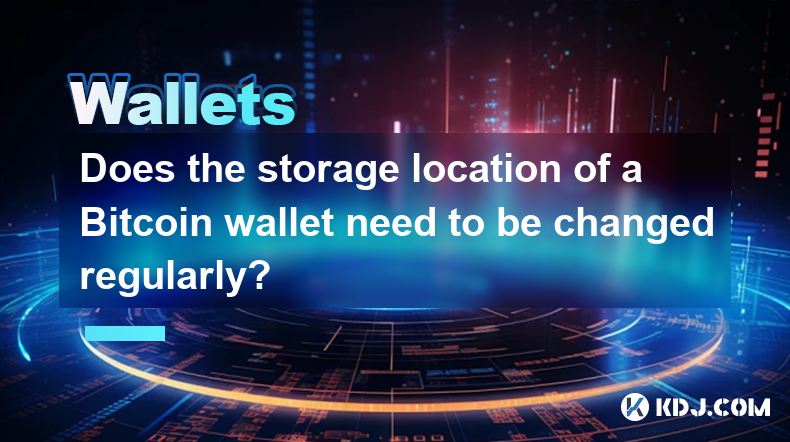
Does the storage location of a Bitcoin wallet need to be changed regularly?
The question of whether to regularly change the storage location of a Bitcoin wallet is complex, depending heavily on the type of wallet and the user's security concerns. There's no single definitive answer, as different approaches suit different risk tolerances. Understanding the various wallet types and associated security risks is crucial before deciding on a strategy.
Hardware wallets, for example, are generally considered the most secure. Their physical nature makes them less susceptible to remote attacks. While you might not need to regularly change the physical location of a hardware wallet, it's wise to keep it in a secure, fireproof safe, and consider rotating its use (e.g., using it only for significant transactions). The crucial element here isn't moving the device frequently, but ensuring its physical security.
Software wallets, on the other hand, are more vulnerable. These are applications running on a computer or mobile device. Their security depends heavily on the security of the underlying device. Regularly changing the storage location, in this context, might involve transferring your Bitcoin to a new software wallet on a different device or reinstalling the operating system on your current device. This is to mitigate the risk of malware or hacking compromises.
Cloud-based wallets present yet another scenario. While convenient, they inherently rely on a third-party provider. The security of your Bitcoin depends on the provider's security practices. Changing the storage location, in this case, means switching to a different cloud-based wallet provider, carefully vetting the new provider's security measures before making the transfer. This adds a layer of complexity but could be crucial in mitigating risks associated with a single point of failure.
Paper wallets, representing a more static form of storage, offer a different perspective. The key security concern here is physical security and the potential for loss or damage. Regularly changing the physical location might be a good idea to prevent theft or destruction. However, transferring funds from a paper wallet requires scanning the private keys, introducing a new vulnerability during the process.
The choice of how frequently, or even if, you change the location of your Bitcoin wallet depends on several factors:
- The type of wallet: Hardware wallets require a different approach compared to software or cloud wallets.
- Your risk tolerance: A high-risk tolerance might mean less frequent changes, while a low-risk tolerance could necessitate more frequent changes.
- The value of your Bitcoin: The larger the amount, the greater the incentive to prioritize security measures.
- Your technical expertise: The complexity of changing wallet locations varies depending on the type of wallet and your technical skill.
Choosing the right strategy involves a careful evaluation of these factors. There's no one-size-fits-all answer.
Step-by-step process of transferring Bitcoin between wallets (general example, adapt to your specific wallet type):
- Backup your current wallet: This is crucial to prevent data loss. The backup method depends on the wallet type.
- Choose a new wallet: Select a new wallet type and provider based on your security needs and preferences.
- Generate a new receiving address: In the new wallet, create a new receiving address where you'll transfer your Bitcoin.
- Initiate the transfer: Use your current wallet to send your Bitcoin to the new receiving address.
- Verify the transfer: Confirm that the Bitcoin has successfully reached your new wallet.
Frequently Asked Questions:
Q: Is it necessary to change my hardware wallet location regularly?
A: No, regularly changing the physical location of a hardware wallet isn't strictly necessary if it's already secured in a safe place. Focus on the physical security of the device itself.
Q: How often should I change my software wallet location?
A: There's no set frequency. Consider it whenever you suspect a security compromise or upgrade your operating system. Regular updates and strong security practices on your device are equally important.
Q: What are the risks of using a cloud-based wallet?
A: The main risks are reliance on a third-party provider and potential vulnerabilities within the provider's infrastructure. Diversifying across multiple providers can mitigate some of these risks.
Q: What is the safest way to store Bitcoin long-term?
A: Hardware wallets generally offer the highest level of security for long-term storage, combined with robust physical security measures.
Q: Can I use multiple wallets for different purposes?
A: Yes, many users employ multiple wallets. For example, one for daily transactions and another for long-term storage. This strategy improves security and organization.
Q: What should I do if I suspect my wallet has been compromised?
A: Immediately secure your device, generate new private keys (if possible), and report any suspicious activity to relevant authorities or the wallet provider. Transfer your remaining funds to a new, secure wallet.
Q: Are paper wallets truly secure?
A: Paper wallets offer a degree of security if handled correctly, but they are vulnerable to physical theft, damage, and loss. The process of using them also introduces risks. They are not recommended for large sums.
Q: How do I choose the right wallet for my needs?
A: Consider your technical skills, risk tolerance, the amount of Bitcoin you own, and your usage patterns. Research different wallet types to find one that best suits your specific requirements.
免责声明:info@kdj.com
所提供的信息并非交易建议。根据本文提供的信息进行的任何投资,kdj.com不承担任何责任。加密货币具有高波动性,强烈建议您深入研究后,谨慎投资!
如您认为本网站上使用的内容侵犯了您的版权,请立即联系我们(info@kdj.com),我们将及时删除。
- Magacoin的Meme硬币激增:下一个Dogecoin?
- 2025-07-09 12:30:12
- 比特币价格:稳定性超过$ 100K,设置了怪物拉力赛吗?
- 2025-07-09 12:30:12
- Magacoin财务:TrustScore和Meme Coins的未来
- 2025-07-09 12:35:12
- 加密鲸鱼的投资组合:解码令牌藏匿和新兴趋势
- 2025-07-09 08:30:12
- 稀有硬币,幸运的发现,宝贵的硬币:日常变化中的宝藏
- 2025-07-09 08:30:12
- Coinbase,Altcoins和The Empire State:纽约加密货币的新时代?
- 2025-07-09 09:30:12
相关百科

如何将Trezor连接到Rabby Wallet
2025-07-09 05:49:50
什么是Trezor和Rabby Wallet? Trezor是由Satoshilabs开发的硬件钱包,使用户可以将其加密货币资产安全地存储在线。它支持广泛的加密货币,包括Bitcoin,以太坊和各种ERC-20令牌。另一方面, Rabby Wallet是一种非监测钱包,主要用于与以太坊区块链及其兼容...

如果我忘记了我的特佐尔密码短语会发生什么
2025-07-09 03:15:08
理解三倍密封词的作用如果您使用Trezor硬件钱包,则可能已经设置了一个密码,作为恢复种子以外的额外安全性。与您的设备随附的12或24字恢复短语不同, Trezor密码短语就像隐藏的钱包修饰符一样。输入时,它会创建一个全新的钱包推导路径,这意味着如果没有正确的密码,您将无法访问关联的资金。此附加单词...
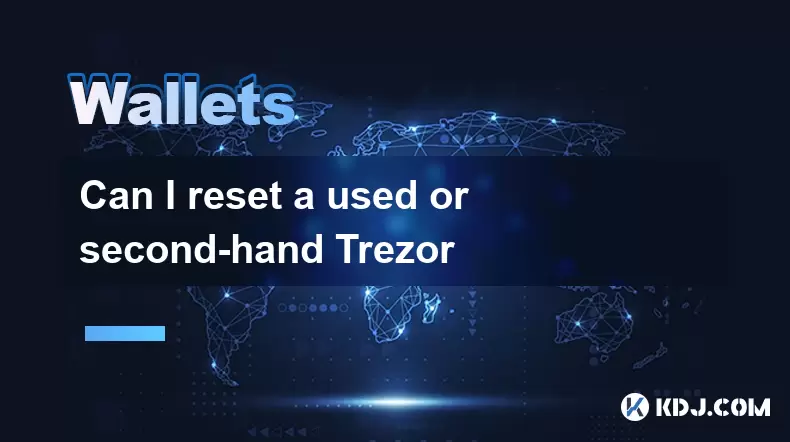
我可以重置二手还是二手Trezor
2025-07-09 11:49:34
了解使用或二手Trezor的重置过程如果您购买了二手或二手Trezor钱包,则可能要做的第一件事就是确保它在使用前完全重置。这样可以确保删除任何以前所有者的数据,私钥和配置。好消息是, Trezor设备可以重置,但是涉及一些特定的步骤和预防措施。在进行继续之前,请了解重置Trezor将删除存储在设备...
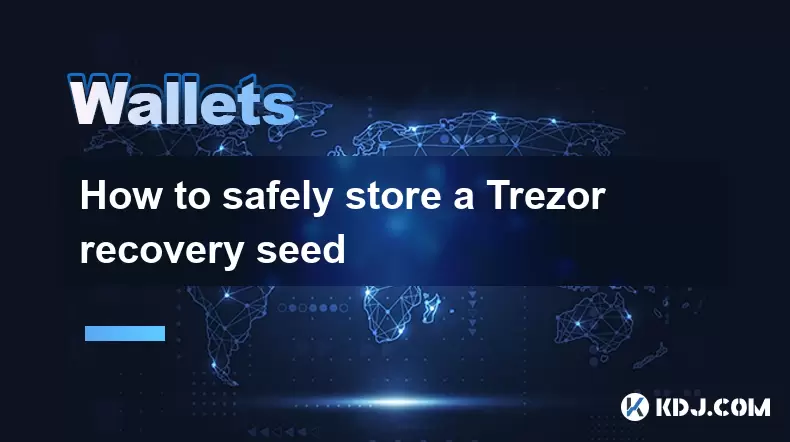
如何安全地存储Trezor恢复种子
2025-07-09 11:22:12
了解Trezor恢复种子的重要性Trezor恢复种子是在Trezor硬件钱包的初始设置中生成的12或24个单词的序列。这些词是您加密货币持有的最终备份。如果您的设备丢失,被盗或损坏,恢复种子使您可以在另一个兼容的钱包上重新获得对资金的访问。该种子短语的安全性至关重要,任何妥协都可能导致资产的不可逆转...
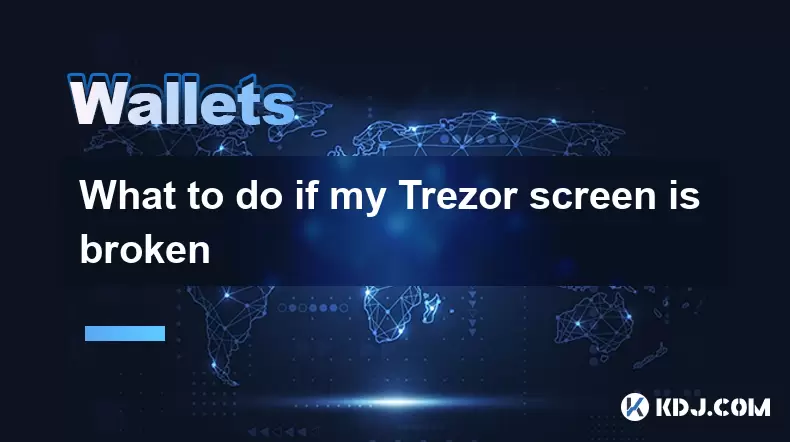
如果我的Trezor屏幕打破了该怎么办
2025-07-09 10:36:11
了解破裂的Trezor屏幕的影响如果您的Trezor屏幕被打破,它可能会严重影响您与加密货币钱包的互动方式。 Trezor设备上的屏幕是关键安全功能,使您可以直接在硬件本身上验证交易详细信息。如果没有运行的显示,则确认交易变得具有挑战性,可能将您的资金暴露于未经授权的活动中。重要的是要了解,尽管内部...
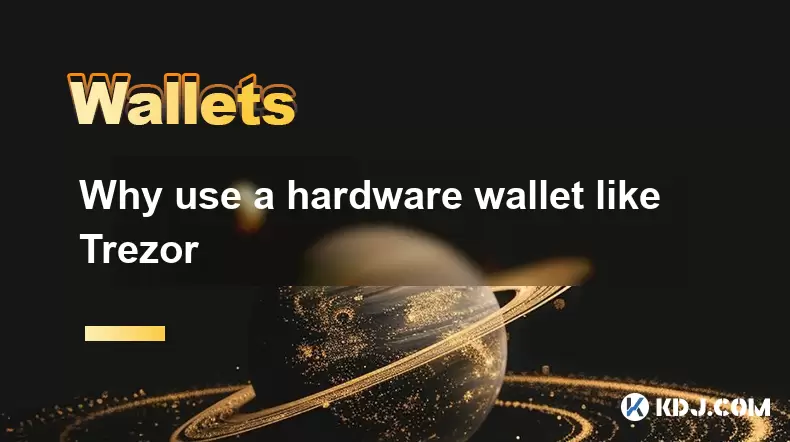
为什么使用Trezor这样的硬件钱包
2025-07-09 11:00:47
什么是硬件钱包,为什么它很重要硬件钱包是一种物理设备,旨在将加密货币的私钥安全地存储在线。与容易受到恶意软件和在线攻击的软件钱包不同, Trezor之类的硬件钱包通过保持与Internet连接的设备隔离的私钥来提供额外的安全性。这种隔离可确保即使您的计算机或智能手机受到损害,您的加密货币资产仍然安全...

如何将Trezor连接到Rabby Wallet
2025-07-09 05:49:50
什么是Trezor和Rabby Wallet? Trezor是由Satoshilabs开发的硬件钱包,使用户可以将其加密货币资产安全地存储在线。它支持广泛的加密货币,包括Bitcoin,以太坊和各种ERC-20令牌。另一方面, Rabby Wallet是一种非监测钱包,主要用于与以太坊区块链及其兼容...

如果我忘记了我的特佐尔密码短语会发生什么
2025-07-09 03:15:08
理解三倍密封词的作用如果您使用Trezor硬件钱包,则可能已经设置了一个密码,作为恢复种子以外的额外安全性。与您的设备随附的12或24字恢复短语不同, Trezor密码短语就像隐藏的钱包修饰符一样。输入时,它会创建一个全新的钱包推导路径,这意味着如果没有正确的密码,您将无法访问关联的资金。此附加单词...

我可以重置二手还是二手Trezor
2025-07-09 11:49:34
了解使用或二手Trezor的重置过程如果您购买了二手或二手Trezor钱包,则可能要做的第一件事就是确保它在使用前完全重置。这样可以确保删除任何以前所有者的数据,私钥和配置。好消息是, Trezor设备可以重置,但是涉及一些特定的步骤和预防措施。在进行继续之前,请了解重置Trezor将删除存储在设备...

如何安全地存储Trezor恢复种子
2025-07-09 11:22:12
了解Trezor恢复种子的重要性Trezor恢复种子是在Trezor硬件钱包的初始设置中生成的12或24个单词的序列。这些词是您加密货币持有的最终备份。如果您的设备丢失,被盗或损坏,恢复种子使您可以在另一个兼容的钱包上重新获得对资金的访问。该种子短语的安全性至关重要,任何妥协都可能导致资产的不可逆转...

如果我的Trezor屏幕打破了该怎么办
2025-07-09 10:36:11
了解破裂的Trezor屏幕的影响如果您的Trezor屏幕被打破,它可能会严重影响您与加密货币钱包的互动方式。 Trezor设备上的屏幕是关键安全功能,使您可以直接在硬件本身上验证交易详细信息。如果没有运行的显示,则确认交易变得具有挑战性,可能将您的资金暴露于未经授权的活动中。重要的是要了解,尽管内部...

为什么使用Trezor这样的硬件钱包
2025-07-09 11:00:47
什么是硬件钱包,为什么它很重要硬件钱包是一种物理设备,旨在将加密货币的私钥安全地存储在线。与容易受到恶意软件和在线攻击的软件钱包不同, Trezor之类的硬件钱包通过保持与Internet连接的设备隔离的私钥来提供额外的安全性。这种隔离可确保即使您的计算机或智能手机受到损害,您的加密货币资产仍然安全...
查看所有文章


























